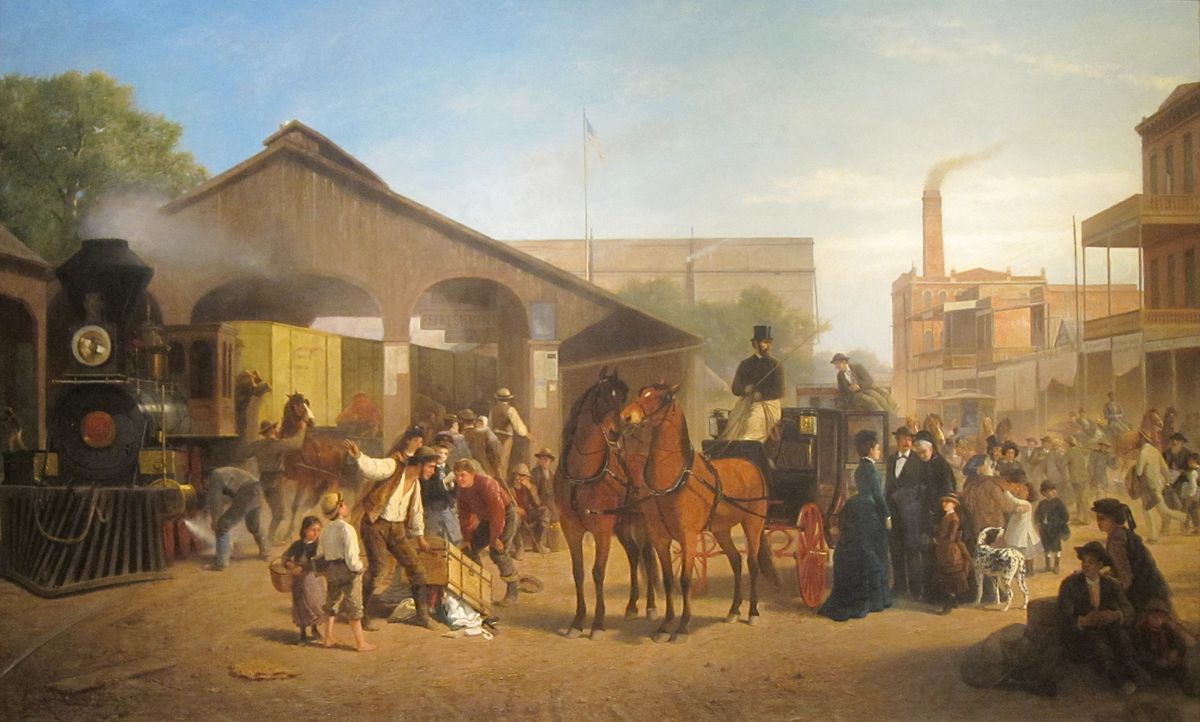
California Railroads
California, USACalifornia's first railroad was built from Sacramento to Folsom, California starting in February 1855. This 22-mile (35 km) line was meant to take advantage of the prosperous gold diggings in Placerville, California but were completed at about the same time (February 1856) as the mining near there came to an end. The first Transcontinental Railroad from Sacramento, California to Omaha, Nebraska was completed on May 9, 1869. The Central Pacific Railroad, the Pacific end of the railroad, largely took over nearly all freight across the Sierra Nevada mountains in Northern California. By 1870 there were railroad connections to Oakland, California and via a train ferry to San Francisco, California from Sacramento—effectively connecting all the major cities in California then to the east coast.
Southern California's first railroad, the Los Angeles & San Pedro Railroad, was inaugurated in October 1869 by John G. Downey and Phineas Banning. It ran 21 miles (34 km) between San Pedro and Los Angeles. In 1876 California's first railroad linking Los Angeles with Northern California was completed when the San Joaquin line of the Southern Pacific Railroad finished the San Fernando Railroad Tunnel through the Tehachapi mountains, linking Los Angeles to the Central Pacific Railroad. This route to Los Angeles followed the Tehachapi Loop, a 0.73-mile (1.17 km) long 'spiral track', or helix, through Tehachapi Pass in Kern County and connected Bakersfield and the San Joaquin Valley to Mojave in the Mojave Desert.
Although most of California's railroads started off as short line railroads the period from 1860 to 1903 saw a series of railroad mergers and acquisitions that led to the creation of four major inter-state railroads servicing the state (the Southern Pacific Railroad, Union Pacific Railroad, Santa Fe Railroad and Western Pacific Railroad). Each of these railroads controlled one (and Southern Pacific controlled two) of the transcontinental railroads which linked California with states farther East. The railroads moved freight and passengers in large quantities and allowed the state's economy and population to expand rapidly during the late 19th and early 20th centuries.
By the 1890s the construction of electric railroads had begun in California and by the early 20th century several systems existed to serve California's largest cities. The state's electric railroad systems included the San Diego Electric Railway, Los Angeles' Pacific Electric system, the Los Angeles Pacific Railroad, East Bay Electric Lines and the San Francisco, Oakland, and San Jose Railway and Interurban rail systems such as the Sacramento Northern Railway were also constructed. By the 1920s, Los Angeles' Pacific Electric system was the largest electric railroad in the world.
